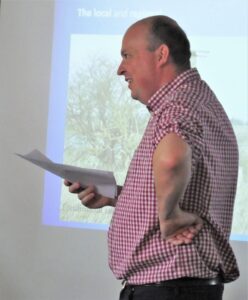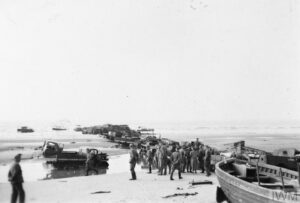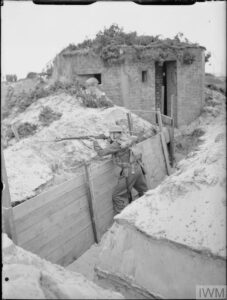Second World War Archaeology in East Anglia

Professor Rob Liddiard (University of East Anglia) gave a fascinating account of how home defences were rapidly organised following the retreat of the British Expeditionary Force from Dunkirk in 1940. At an event held in Acle on 21st June 2019, Prof. Liddiard described that plans for defending the coast and interior were quickly developed and explained how they evolved during the remainder of the war.
Over 330,000 soldiers were rescued from the beaches at Dunkirk during ‘Operation Dynamo’, between 26th May and 4th June 1940. The evacuation became essential after the British Expeditionary Force (BEF) – sent to defend France in September 1939 – were trapped between German troops and the English Channel. The period between their deployment and Germany’s blitzkrieg through Belgium in May 1940 is often called ‘the Phoney War’.

Although many soldiers were successfully rescued, most heavy equipment was abandoned. Around 2,470 guns; 445 tanks; 20,000 motorcycles; and 65,000 other vehicles were left behind. When the coast of Britain became the new front line, the troops tasked with defending it were initially poorly equipped.
As Operation Dynamo began, Field Marshal William Edmund Ironside was appointed Commander-in-Chief Home Forces. Aware that the returning army would be lacking military hardware he organised a ‘coastal crust’ of defences, including batteries at Great Yarmouth, to delay any assault. He also instigated a system of ‘stoplines’ to prevent the rapid progress of any German invasion.

Stoplines were strategically arranged across the landscape to take advantage of natural and artificial barriers, which included: rivers; anti-tank ditches and blocks; and, of course, hundreds of concrete pillboxes.
Several different designs of pillbox were produced. They were usually associated with a trench system. It was intended that a retreat to within the pillbox itself would only be made in the direst circumstances. In rare instances, usually in village or town centres, pillboxes were also camouflaged. At Acle, the Manor House still retains a disguised pillbox attached to its east gable.

Two examples of Broadland mills being converted for use as pillboxes (or ‘millboxes’) by having embrasures built into them are also known: Ludham Bridge and Stracey Arms Mill.
Across the Broads, the numerous dykes and drainage channels of the surrounding marshland provided additional obstacles to tanks. However, the Broads themselves provided a potential opportunity to an invading force. It was feared that enemy seaplanes could be used to land on the Broads. A specialist aquatic unit, the Broads Flotilla, was set up to patrol the rivers and set out mines on the Broads. The Flotilla was made up of several boats armed with Lewis machine guns. Based at Wroxham, it had sub-bases at various other locations in the Broads.

Ironside’s strategy of relying on static defences such as these was criticised from the outset. Although devised by necessity, it was quickly viewed as being outmoded. Ironside was soon replaced by Field Marshal Alan Brooke, who favoured a more mobile response; possible once more equipment became available through increased production.
Under his command ‘Nodal Points’ at strategically important road junctions were established. The village of Acle became one such site. The Blacker Bombard (aka spigot mortar) was introduced as a mobile anti-tank weapon and the concrete pedestals the mortars were mounted on began to be installed, often near the site of existing pillboxes.
Of course, the invasion that was expected never occurred. After the war most defences – the barbed wire entanglements, roadblocks and infantry positions – were removed. Only the most stubborn remnants are visible today: pillboxes, spigot mortars and anti-tank blocks.
One appreciative member of Prof. Liddiard’s audience reflected on their feedback form, “I moved from total ignorance of the entire subject to amazed appreciation of the knowledge and information I had acquired.”
This event was held as part of the Broads Hidden Heritage programme led by Norfolk County Council.
